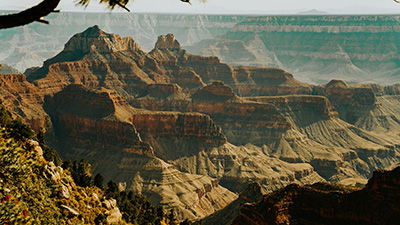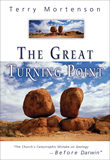
Soil’s Unique Mineral Fingerprints
Examining a Critical Part of the Earth’s Surface.
Did you know that soil is considered a “fingerprint” in forensic science? Forensic science investigators often identify trace evidence in crime scene work. The unique identifiers in trace evidence are so small they require special magnification to reveal the hidden clues. Soil is one type of trace evidence. God designed the minerals in soil with distinctive characteristics. These characteristics are used along with relative location and geographic region to trace movement. Minerals include hematite, limonite, calcite, dolomite, and gypsum, to name a few.1 The composition of the minerals in varying percentages is what gives soil its color. Soil also provides important minerals for plant growth, as well as the human diet. These include calcium, phosphorus, iron, magnesium, copper, and zinc. Soil also includes air, water, and 4% organic material.
Finding this type of evidence helps to determine if evidence has been moved from one location to another or if a suspect was present at a crime scene and carried away microscopic geographic locaters in their clothing, shoes, and even the tires on their car. There is also the potential to identify parent material or matrix characteristics in soil that point back to specific types of vegetation. Though forensic science investigation is only necessary because man’s disobedience against God brought sin, death, and suffering into the original, perfect creation, the Lord placed unique details throughout his creation to aid in the search for justice.
When was soil created? God created dry land on day three of the creation week. “And God said, ‘Let the waters under the heavens be gathered together into one place, and let the dry land appear.’ And it was so. God called the dry land Earth, and the waters that were gathered together he called Seas. And God saw that it was good” (Genesis 1:9–10). Though soil is the result of weathered rock, it is likely that God created different types of soil instantaneously to support the vegetation also created on day three. There are other examples of mature formations during the creation week such as in the adult form of Adam and Eve, the fruits and vegetables needed to feed the animals and humans by days five and six, and the stars that would have been visible to Adam and Eve on the evening of day six.
Soil type is determined by its gross appearance, meaning the visible structure varies by the type of soil. Since soil changes color and consistency when wet, soil is always evaluated when dry. Types of soil include:
- Sand—light, warm, dry, acidic, low in nutrients, and has quick water drainage. Sand is present in a large range of environments and geographic regions.
- Clay—dense with high nutrients, moist, drains slowly, and tends to crack in the summer. Clay is only formed through chemical weathering.
- Silt—light, moisture retentive, carried by moving water, nutritious, well drained, holds moisture, and tends to compact.
- Peat—high in organic matter and retains moisture.
- Chalk—light or heavy and high alkalinity with calcium carbonate or lime composition.
- Loam—a mixture of sand, silt, and clay, fertile, has good drainage.
In Matthew 13, Mark 4, and Luke 8, Jesus uses four conditions of soil to describe the hearts of people when they hear the Word of God. In Matthew 13:3–8, the Bible says, “A sower went out to sow. And as he sowed, some seeds fell along the path, and the birds came and devoured them. Other seeds fell on rocky ground, where they did not have much soil, and immediately they sprang up, since they had no depth of soil, but when the sun rose they were scorched. And since they had no root, they withered away. Other seeds fell among thorns, and the thorns grew up and choked them. Other seeds fell on good soil and produced grain, some a hundredfold, some sixty, some thirty.” How do these types of soil relate to the human heart?
First, it is important to recognize that in this parable (recorded in three gospels), there is only one sower, one type of seed, one plot of ground, and one type of soil but in four different conditions. The only variable that is changing in this parable is the condition or location of the soil where the seeds are sown, and this directly affects the viability of the seed. This parable is relaying an important truth, and that is everyone—all humans who are equally made in the image of God—has a potential to produce a bountiful harvest when they choose a life with Christ. The sower (Jesus Christ) provides one message (the seed), salvation through Christ alone. The problem occurs in the heart of people. How receptive are they to the message? Are they willing to let Jesus work in their lives and cultivate their lives to reflect a follower of Christ? Are they willing to stand on the authority of God’s Word and produce visible fruit?
Jesus describes four results when the seed is sown on these soils:
- On the path: For a farmer, the path is walked on repeatedly, causing the ground to become compacted, hard, and impermeable. This type of soil represents the hardened hearts of man. When the “seeds” are scattered on the path, they are an easy target for the influences of Satan, and their hard hearts reject the gospel message, leaving them lost in their sins.
- On the rocky ground: In farming, this ground is shallow. Plants have little roots to anchor to the soil and receive proper nourishment, therefore, are easily withered by the sun. These are people who fail to cultivate and grow their faith. Ultimately, they abandon the faith when they experience trials and tribulations as a result of their new life in Christ.
- In the thorns: When considering a plot of land, the thorn-infested soil is on the edges where a plow cannot reach. Since these seeds did not fall within the area that is cultivated and cared for, even if they sprout, they will be quickly overtaken by weeds. Sadly, these people sit on the edges, occasionally attend church, and are resistant to committing to the body of Christ. They are not diligent to cultivate a relationship with Christ by seeking him through prayer and studying his Word. Though they may produce one small fruit, they are easily overtaken by worldly pleasures and fall away from Christ.
- On good soil: The good soil is a well-plowed, cultivated area that has been broken up into a porous, nutritionally rich soil ready for seed. This soil has been essentially changed and turned over by the plow. Individuals with good soil, or hearts ready for the Word, experience seeds of truth and are fundamentally changed by the power of Christ in their lives. Now that they are firmly rooted in Christ, they recognize that cultivation is a lifelong process as God continually brings to light the faults and sins within their newly softened heart. Sometimes this may be a painful process as people work through sins in their lives, such as relationship problems, addictions, inappropriate behaviors, etc. But they recognize this is part of God’s love for them and that a changed heart is a changed mind, resulting in a changed life. Fruit is bountiful and observable in their lives.
In every church, ministry, and school, all four conditions of soil (or people) are present. Each person will hear the seeds of truth and willfully affect how/if those seeds will be cultivated in their life. Since Jesus, the ultimate sower, has commanded us to go out and spread the gospel, we can imitate him and be sowers in our areas of influence (Matthew 28:19–20; 2 Corinthians 9:10).
Footnotes
- BJUY’S, “Mineral Riches in the Soil,” Biology, accessed October 19, 2023, https://byjus.com/biology/mineral-riches-in-the-soil/.
Recommended Resources

Answers in Genesis is an apologetics ministry, dedicated to helping Christians defend their faith and proclaim the good news of Jesus Christ.
- Customer Service 800.778.3390
- Available Monday–Friday | 9 AM–5 PM ET
- © 2025 Answers in Genesis




